Corporate Governance Board Leadership Training Resources User ...
Corporate Governance Board Leadership Training Resources User ...
Corporate Governance Board Leadership Training Resources User ...
You also want an ePaper? Increase the reach of your titles
YUMPU automatically turns print PDFs into web optimized ePapers that Google loves.
<strong>Training</strong> <strong>Resources</strong> <strong>User</strong> Group Workshop February 20105IBGC Experiential Learning ExamplesQuizzesIn average, family-controlled companies performbetter than corporations with dispersed ownership.True or False?Only 30% of family-controlled companies survive tothe third generation still in control of the foundingfamily members. True or False?In November 2008 Aracruz Celulose, a worldleader in pulp and paper listed in the São Pauloand NY Stock Exchanges, admitted that it hadmade a $2.13-million loss on its foreign exchangederivatives. True or False?DiscussionThe board chairman, five directors, and the CFOof Ferbasa, a profitable listed company, renounceddue to disputes with the controlling shareholderwho ran meetings directly with the executives andcancelled an internal audit service requested by theboard. Has a controlling shareholder the right tointerfere?Role PlayThree years ago, you joined the board of a nonlisted,family-controlled company to implementbetter practices of corporate governance. Thatincluded the step-by-step elimination of unorthodoxcommercial and tax-evasion practices, an objectivesuccessfully completed last year. Badly hurt by theinternational crisis, the company lost money; it nowfaces a credit crunch and debt is above toleratedlimits. In an emergency meeting, the CEO proposesthe temporary return to former unorthodoxpractices to improve cash flow until the crisis fadesaway. What would you do?In utilizing the <strong>Training</strong> <strong>Resources</strong> to prepare theirsessions, they commented on the value of the documentsand references.A broader discussion followed the IBGC presentationin which all the participants contributed their thoughtson how to integrate the materials into their training andtraining sessions:> The materials were considered to be the mostcomprehensive available and were global in nature,drawing on best practices worldwide.> Localization is much more of a major task thaninitially recognized and should be highlighted in the<strong>Training</strong> <strong>Resources</strong> guidance.> The PDF, especially the notes, did not allow for easyinsertion of local data, such as providing notes onlocal codes, laws, and cases> <strong>Training</strong> and trainers in the local context varied.Some cultures were used to taking training fromacademia (China).> Some in-house courses for directors and managementof a particular company varied in their success,depending on the “openness” of the company andwhether it was hierarchical in nature.> Successful training programs do not necessarilyalways lead to successful improvement in corporategovernance. What is required to achieve the desiredoutcome is partly due to the existence of stronginstitutional backing for corporate governancechange, and the presence of corporate governancechampions with the commitment and time to devoteto achieving change.FishbowlParticipants simulate a board meeting to addresscontroversial issues that test the company’scommitment to corporate governance bestpractices.
<strong>Training</strong> <strong>Resources</strong> <strong>User</strong> Group Workshop February 20106Trainers’ Personal LessonsPersonal/teacher> Rethink the learning concepts (don´t use our learning process as a reference)> Learn how to be more effective from the students’ perspectiveAs TOT graduates, theseexperienced executivesand board memberswere credible informantsfor this review. Theytook the lead in notonly discussing, butdemonstrating thebenefits of the program,particularly the interactiveadult learning techniques,which they described as“more suitable and moredynamic, resulting inmore comprehension.”> Create a “sense of property and implementation opportunity”> Connect with fellow trainers to share experiences and curriculum contentSupport material> Review the content categories of grouping> Introduce “adult learning” techniquesStructure and class lay-out> Keep flexible — ensure that there are areas to form groups and many flip chartsare availableStudents> Initiate a process to measure what they implement instead of what theymemorizedSource: Artur Neves, Leonardo Viegas, Peter HarazimDay TwoThe second day was designed to provide a more detailed analysis of the successes andchallenges in using the <strong>Training</strong> <strong>Resources</strong>.FIRST SESSION: What worked? What didn’t?The first session on the second day was intended to surface as many issues as possibleregarding the <strong>Training</strong> <strong>Resources</strong> and to discern from first-hand experiences andimpressions from different regions, the challenges they faced in implementing the<strong>Training</strong> <strong>Resources</strong>, and solutions they found to offset them.The facilitator opened the session by proposing some of the variables affectingsuccessful deployment. The stronger, more connected and developed each of thevariables in the vertical dissemination chain is, the stronger the effect of the Forum’sstrategies and the wider the reach to individual directors and companies.
<strong>Training</strong> <strong>Resources</strong> <strong>User</strong> Group Workshop February 20107Participants divided into three groups to consider successful deployment strategies,challenges to dissemination, and solutions they provided to overcome disseminationobstacles.Factors contributing to in-country success were:What is required toachieve the desiredoutcome is partly dueto the existence ofstrong institutionalbacking for corporategovernance change,and the presence ofcorporate governancechampions with thecommitment and timeto devote to achievingchange.> Quality/commitment of in-country leadership, be it individual or institutional> <strong>Training</strong> <strong>Resources</strong> was a major leap ahead, giving a quality “starting point” for thosenot having well-developed training programs and materials> Localization of materials, including translation, examples, case studies, legalmodifications> Collaboration with local known and respected trainers; breadth and currency ofissues and materials> List of references and model documents considered to be a boon> <strong>Training</strong> methodology to enable participation by directors; recognition of localbusiness culture and environment factorsChallenges identified as issues were:> Localization of materials, and where and how to start the process and time toundertake this> PDF form of notes prevented insertion of local content as required> Adapting content to fit within existing program offerings and to existing trainerstyles> Adapting the materials for training of directors as opposed to trainers> Application of materials to local laws, regulations, business structure, culture, andterminology usage> Application of materials to other sectors, such state-owned entities, family-ownedentities, and small and medium-sized entities, banks, etc.> Availability of trainer pool with time and commitment to training in corporategovernance; level of combined training skills and corporate governance knowledge> Perception of real corporate governance knowledge as opposed to reality ofknowledge
<strong>Training</strong> <strong>Resources</strong> <strong>User</strong> Group Workshop February 20108Solutions found to some of the challenges:What Worked?Content> Able to integrate <strong>Training</strong> <strong>Resources</strong> into trainers’existing curriculum> Comprehensive> Use as a reference point to deepen and broadenIOD programs> Use of the learning cycle to engage adult learners> Ease of navigation to find content> Simple language> Adaptable case study to local environment> Rational sequence> Characters in the case study are universalMethodology> Use of ELC in every module> Co-facilitation> Modules duration> Able to address motivational factors> Apply to other products (e.g. ADR toolkit,consultancy)What Hasn’t Worked? Why?> Inability to manipulate PDF files to localize materialsAction: Need to put in format that data can bemanipulated> Language translation difficultiesAction: Need to focus first on translating thePowerpoints rather than the notes> No indexAction: Need to develop an index> Translation chapter-by-chapter or all at oncedepending on the immediate need — Microsoft andGoogle have translation services that can lessen theworkload> Formation of expert committees to develop andinsert local case studies, examples and local legalrequirements> Development and encouragement of trainer networksto share materials used in training sessions> Re-training/practices to develop trainer poolFollowing small group deliberations, the open floordiscussions demonstrated that participants werecomfortable expressing sincere concerns, and theyidentified classic development dilemmas:> “How to change the inertia…?” (Leonardo Viegas)> “How to improve the velocity of adoptions…?” (EdyLuiz Kogut)> “How to demonstrate results…?” (Phil Armstrong)> “How to change mindsets…?” (Artur Nevers)Second Session: The <strong>Training</strong> <strong>Resources</strong> —Are They a Useful Tool?This session examined the strengths and weaknesses forthe <strong>Training</strong> <strong>Resources</strong>, the product itself, in six areas:layout; organization; content; methodology; modeof delivery — print format; and, relevancy to marketdemand. Participants were asked to provide solutions.In responding to requests to provide electronic filesthat trainers could use to write their training courses,the Forum explained why the files are provided inPDF format only. This protects the Forum’s copyrightownership for the materials and guards against misusesof the information.
<strong>Training</strong> <strong>Resources</strong> <strong>User</strong> Group Workshop February 20109StrengthsWeaknessesLayoutQuality design — invites using it,reinforces authority of contentsWhite spaceSlides – notesEasy to find information throughnavigationGrid used to provide step-by-stepdirections for modulesAfraid to write in itLooks expensiveBinding – should have spiralFolder insert for trainer to insertadditional materialsToo heavy; way to provide a carryingcase?More space to write in itSpiral bindingorganizationLogical flow of materialIcons to locate materialAffords flexibility to the trainer tochoose materialToo much material in each trainingmodule to cover within three hoursTiming determinations — up to eachtrainer’s judgmentPlace each case study in the relevantmodule rather than bound themtogether as one volumeComprehensiveModular structure enables trainers toadapt the contents to their needscontentQuality and amount of the materialexceeds all other like materialsReferencesComprehensive reference pointLocalizationTranslationSome modules too sophisticated
<strong>Training</strong> <strong>Resources</strong> <strong>User</strong> Group Workshop February 201010StrengthsWeaknessescontent CONTINUED<strong>Training</strong> participants have differentlevels of knowledge, demandingdifferent levels of sophistication.<strong>Training</strong> <strong>Resources</strong> addresses that bythe broadest and deepest range ofmaterials that trainers can modify tomeet their training participants’ needs.Use of learning cycleEase of navigationCase study characters universalSome content not well covered, e.g.,financial topics and state-ownedenterprisesVolume of content overwhelmingCase study simplicity – can be easilymodified to match different countries’contextSequence of material is rationalmethodologyExtremely useful<strong>Training</strong> experiences reinforced theimportance of ELCmode of deliveryCD ROMFace-to-face trainingConvenience, accessibleForum’s exploration of blog toinform trainers about updates andpromote the sharing of their individualexperiencesPDF format – can’t change content tolocalizeElectronic – Webcasts, videos, otherformats (iPhone applications)LanguageNeeds to be adapted to coverstate companies, family-ownedcompanies, etc.
<strong>Training</strong> <strong>Resources</strong> <strong>User</strong> Group Workshop February 201011StrengthsWeaknessesRelevancy to market demandVast range of topics coveredTrainers must localize materials, whichis time consuming and costly in termsof hoursInternational recognition of Forumbrand helps in marketing IOD trainingprograms based on <strong>Training</strong> <strong>Resources</strong>Continuous updatingProvides what trainers needThird Session: Are the <strong>Training</strong> of Trainers Programs Adequate?This session examined how the TOT programs are answering the trainers’ needs and,second, how the Forum can further support trainers’ professional development as theygain experience and expertise through their training sessions.The <strong>Training</strong> <strong>Resources</strong>is clearly an importantreference point for IODs —and particularly novicetrainers — in terms ofits content. The practicalapplicability of the adultlearning theory provides amajor contribution to IODsand other organizationswishing to market newapproaches and skillsthat help build boards’capacity to follow corporategovernance principles.The facilitators began by exploring the major challenges the <strong>Training</strong> <strong>Resources</strong>,particularly the ELC, poses to trainers, particularly how it pushes them out of theircomfort zones to develop new training approaches to engage adult learners.Three profiles of trainers were used to illustrate some of the challenges and successesthat may arise based on a trainer’s education, professional experience, and motivationsfor becoming a trainer.From these profiles, the discussion turned to the emergence of “second generationtrainers,” those who had been trained by “master trainers” through the Forum’s TOTprogram. Questions that emerged included:> Who were the master trainers?> Was there a need for evaluating trainers at the TOT to identify the followingcategories• Master trainer status ability to train others• Competence to lead CG modules• Competence to co-present CG modules• Further development required> Did the master trainers need additional support in developing second generationtrainers?
<strong>Training</strong> <strong>Resources</strong> <strong>User</strong> Group Workshop February 201012“How can weaccelerate the velocityfor moving forward?We are increasinglyunder pressure tomeet a demand that isescalating, is exponentialbut our team is smalland our resources arelimited.“Ashraf Gamal El-DinExecutive Director,Egyptian Institute of DirectorsDuring this conversation, participants raised questions about the evaluation andassurance of quality and competence for second generation trainers. Several institutesexpressed concern about certification and the “regulatory” role it may create forthem in terms of monitoring trainers to ensure that they adhere to high standards ofprofessional and ethical conduct. Furthermore, the Forum is concerned with accessto the materials to ensure genuine, high-quality users. To address this, the Forumdeveloped a contract signed by those who attend TOT sessions. This contract wasdesigned to protect the contents from misuse and to ensure that the Forum can assessthe impact that its TOT program is having in building capacity, particularly in IDA,developing, and emerging market countries.After this discussion, the following framework was introduced to help workshopparticipants think through the issues, including training needs, that arise as aninstitute evolves from a start-up into a mature, autonomous one.The Forum’s first toolkit, Building Director <strong>Training</strong> Organizations, was seen asproviding assistance in moving from cell 1 to 2. The <strong>Training</strong> <strong>Resources</strong> was seen asproviding assistance in moving from cell 1 to 3.Low institutioncapabilityHigh institutioncapabilityHigh training activity Cell 3Growth of trainingCell 4Mature/autonomyLow training activity Cell 1Start upCell 2Growth of servicesother than training andadvocacyMoving from cell 1 to 4 required considering whether to:> Develop training to become a major revenue earner> Launch non-training services and advocacy activities (many of these activities mightbe cost centers rather than revenue thereby requiring the funds generated fromtraining)> Initiate continuing education and special topics programs to fulfill a need of directorsto remain current or deepen their knowledge in particular areas, such as financialstatements
<strong>Training</strong> <strong>Resources</strong> <strong>User</strong> Group Workshop February 201013> Expand regionally, building on the IOD’s expertise and benefitting, perhaps, fromthe economies of scale and exchanges of experiences and knowledgeCAPACITY BUILDINGSTRONG CAPACITY WEAK CAPACITYGROWTHSTART UPMATUREGROWTHHigh PerformanceCenter forCG ExcellenceWEAK SUSTAINABILITYSTRONG SUSTAINABILITYINSTITUTIONAL BUILDINGThe facilitators divided the workshop into three groups to consider:> As a member of the IOD, what are the opportunities for growth? (two groups)> How do we use the e-learning aspects to do the same thing?The groups’ reports:AS A MEMBER OF IOD1. Pro bono public speaking – for NGOs, etc. Exposure. Demonstrates expertise.Reinforces the IOD’s brand.2. Present at or attend conferences. Presenters and trainers at the same time. Interactwith larger audience.
<strong>Training</strong> <strong>Resources</strong> <strong>User</strong> Group Workshop February 2010143. Publications — provide the latest information“The real barriers are not thecontent but the teachers.We have our own mindsets.We have had our ownways of teaching corporategovernance, but the <strong>Training</strong><strong>Resources</strong> is showing us newways to inspire participants.Our challenge: How canwe stimulate trainersto use the new trainingmethods effectively and theinformation in their training?And, congratulations. Theworkshop was an opportunityfor me to visit, re-read andconfirm how good the<strong>Training</strong> <strong>Resources</strong> is.”Arturo NevesIBGC Trainer, Amphi Consultant4. Annual event for trainers and members to exchange information and knowledgewhile renewing and expanding their professional networks5. Exchange of trainers among the IODs6. Develop a data base — post information (i.e., case studies, useful information tobenefit training) and opportunities (i.e., consulting arrangements)7. Build consultancy/advisory services — gives them more dimensions to their businessmodel for revenues and broadening awareness of their training programs, but it maypresent conflicts of interest8. Establish a membership committee to market the IOD to potential board directors9. Pursue policy advocacy work — this puts the IOD more in touch with reality, withexperiences to inform their training, while reinforcing its expertise and influence10. International study tour — comparable to that done by IBGC to learn fromregulators, stock markets, chairmen, and other IODs about their successes andfailures in advancing corporate governance11. Join knowledge management communities to build know-how and share expertise,particularly through new media and social networking technologiesE-Learning1. Create training videos that can capture the experiential training methods and thecurriculum content — provide in different forms through DVDs, Websites, YouTubechannel, etc.2. Provide clips/videos from actual TOT sessions3. Use online technologies to provide regular questions and answers to trainers and toencourage dialogue; one effort by the Forum is well underway through its blog4. Create “communities of practice” around different topics: ethics, accounting changes,family-owned companies5. Implement a program of podcasts/Webinars to provide refresher training6. Use Google and Microsoft Seven to reduce the translation barriers7. Use Skype to save telephone expensesThese sessions succeeded in providing increased confidence in participatory learningand building training networks for support and collaboration.
<strong>Training</strong> <strong>Resources</strong> <strong>User</strong> Group Workshop February 201015Action IdeasBefore TOTs Continue to recruit participants from diverse professionalbackground, including experienced board directors, corporate executives,professional trainers/coaches, university faculty and corporate secretaries. TheseTOT graduates are valuable resources for their IODs and the Forum. With suchdiversity, TOT deliberations, performance, and networking can be very high —and surprising. Note that gender balance remains a priority.During TOTs The 800+ page <strong>Training</strong> <strong>Resources</strong> can be overwhelming so moreneeds to be done to improve trainers’ familiarity with the layout, icons, andother features of the units, modules, and case study. TOT faculty can be moreexplicit in referring to and integrating these resources, not only in the Day Oneorientation, but also during training sessions.Following TOTs Trainers follow up coaching, and they need to adapt some ofthe <strong>Training</strong> <strong>Resources</strong> within local contexts. Some of the requested additionsare local “real world” success stories, True/False activities based upon currentCG-related events. In addition, trainers have requested guidance on how toadapt the <strong>Training</strong> <strong>Resources</strong> to various training-specific situations.<strong>Training</strong> of Trainers: Advantages> Introduces new techniques> Offers opportunities to experiment in a safe environment among peers> Builds confidence> Broadens net:work> Improves success through shared experiences while minimizing experimentation> Results in familiarity with using the <strong>Training</strong> <strong>Resources</strong>Fourth Session: Rethinking the Dissemination Strategy?Participants reviewed the current dissemination strategy, including the contract, the blog,and marketing strategies. These issues were further discussed within the Forum’s PhaseThree. (See box page 16.)Phil Armstrong outlined the reasons for the Forum’s contract and addressed someof the IOD concerns. The Forum chose to limit distribution to select organizationsand individuals to ensure that the materials were being utilized properly and protectthe copyright ownership of the contents. To meet donors’ requests for informationdemonstrating the impact and effectiveness of the Forum’s initiatives, the Forumneeded to require that those using the <strong>Training</strong> <strong>Resources</strong> provide regular reports thatsummarize the qualitative and quantitative metrics of an institute’s training programs.
<strong>Training</strong> <strong>Resources</strong> <strong>User</strong> Group Workshop February 201016Phase IIIThe strategic objectives for Phase III are built upon the Forum’s recognized strengthsand competencies:Leverage and cost efficiency: The ability to highly leverage PSAG and otherpartners, thus making the Forum cost efficient (and which will constitute acontinuing focus in Phase III).Innovation based on global expertise and networks: A recognized ability toinnovate through the toolkit series and other best practice guidance tools drawingon the Forum’s extensive global network of institutions and experts.Partnerships: A track record in building strategic and tactical partnershipsto leverage the Forum’s work to ensure a cohesive, coordinated approach todevelopment assistance (without duplication).“The best trainingkit that I have everseen among all of thematerial on corporategovernance. Absolutely.Easy to use. Easilyapplicable in differentcountries given themodular design of thecurriculum.”Olli V. VirtanenSecretary GeneralFinnish Association ofProfessional <strong>Board</strong> MembersThe objectives are also driven by the changed circumstances of constrained budgets,the need to achieve more with less, and to make the most effective use of theresources that the Forum can confidently access and leverage.Some workshop participants said the contract had many restrictions, leaving themconfused about what they could and could not do with the material, includingtranslation, distribution to their training participants, and placing the contents on theirWebsites. Armstrong said the Forum would review the concerns and provide moreclarification of what the contract allows IODs to do with the material.The usage of the Forum’s “blog” was outlined and emphasis was placed on increasedusage in recent times demonstrated by numbers of visitors to the site and lengthsof visit. Since the Forum increased the contents on the blog three months ago,participation has increased. Some facts:> There were over 300 people registered to use the blog> 82 participants had visited the blog> There had been 226 visits to the blog> Participants from 29 countries had visited the blog> The average time that a participant visits the blog has been 7 minutes and 9 secondsand views 9 pages> The reminder emails are an effective way of reminding people to visit
<strong>Training</strong> <strong>Resources</strong> <strong>User</strong> Group Workshop February 201017Action Points for the Blog> Consider using feeder technologies, such as RSS feeds, toregularly supply the blog community with updates> Register the Brazil and Chile TOT participants on the blog> Put the index of the <strong>Training</strong> <strong>Resources</strong> on the blog> Make available some materials in non-PDF formats sotrainers can localize the information more easily> Assign someone within an IOD to monitor the blog andoffer content> Bring the attractions of Facebook to the blog, creating a“face to face” community> Recognize that the blog may not be viable for all> Provide a place for networking opportunities, professionaland personal> Have a special section for the <strong>Training</strong> <strong>Resources</strong>> Post questions to provoke discussion, surveys, andsignificant news“You need to find a way to create a ‘face to face’ community,” borrowing from thetools that Facebook provides, for example, said Artur Neves. Gene Spiro noted thatthe Forum is using Facebook for its media training. More than 300 people shareinformation about reporting on corporategovernance issues. The main challenge isfinding someone to “champion and manage it.”Ashraf Famal El-Din also observed that “youhave to keep feeding it.” Several suggested thatthe Forum simplify access to the blog, providecase studies from IODs and other sources, andutilize other online resources and tools.Some suggested that a blog was only one partof a knowledge management platform. It mayalso include formal knowledge gathering andsharing mechanisms through websites anddistributed networks of partners (institute,academic and trainer communities) andexpertise to enable south-south collaboration.The web capability of the IFC Website wasraised as a concern in this respect. These areimportant considerations, Armstrong noted,as the Forum positions itself to be a globalknowledge platform for Phase Three.All the IODs underscored the importanceof branding to their institutions in attracting directors, building membership, andadvocating corporate governance reforms to regulators and stock markets. Severalposed questions about the need for guidelines from the Forum regarding the use ofthe Forum’s logo. When the Forum implements its program to establish Centers for<strong>Corporate</strong> <strong>Governance</strong> Excellence, several supported the Forum having a special logo.
<strong>Training</strong> <strong>Resources</strong> <strong>User</strong> Group Workshop February 201018Day ThreeMeasurement Indicators andInstruments> Surveys of end-users> Oral assessments> Indices (index of corporate governance)> Financial sustainability/demand> Courses as percentage of revenuesSESSION ONE: Monitoring and EvaluationChoosing the appropriate methodology to monitor and evaluate results, gatheringthe data, interpreting its meaning, presenting the findings — these are increasinglyimportant for IODs to ensure that their training programs are effective, relevant totheir markets, and personally useful to participants in developing leadership skills. Thisinformation is also extremely important for the Forum to ensurethat is strategy and activities are fulfilling its mission in a costeffective,efficient matter.After surveying the typical questions that the Forum andIODs seek to answer through data collection and analysis, thefacilitator listed precise topics necessary for evaluation: continuedrelevance/demand; demonstrated results; impact; outcomes;outputs/products; improved performance (effectivenessand efficiency); products; product uses; sustainability; and,recognition.> Number of training programsAs an IOD develops and executes a monitoring and evaluation> Number of board directors trainedprogram, many issues surface throughout the process: Who> Number of trainers trainedis responsible for results? (attribution); What is your desiredend-point? (success factors); What measures should you select?(quantitative vs. qualitative) What were the indicators before andwhat are they now? (baseline); What are the trends? (time series indicators — plottedover time); Can we assess and compare performance across projects, programs, countries,etc.? (aggregation/comparison of results); What are the costs? What roles does theinstitute and its departments play in monitoring? How will this data be shared?To this list, participants suggested several long-term impact measures: demonstratingcontinued Forum relevance by continuing and increasing demand for Forum support;showing growth in number and quality of Forum partnerships and relationships forcorporate governance development at the global, regional, community of practice,institutional, and individual levels.The discussion did not generate a road map for developing Forum monitoring andevaluation. Some suggested that the Forum consider organizing a small workinggroup to develop a road map. This group should include one person who hasconsiderable experience of educational program monitoring and evaluation; anotherwho has existing management information systems used by the Centers of <strong>Corporate</strong><strong>Governance</strong> Excellence; a third who is responsible for developing the managementinformation systems within the Forum.
<strong>Training</strong> <strong>Resources</strong> <strong>User</strong> Group Workshop February 201019SESSION TWO: Building Centers for <strong>Corporate</strong> <strong>Governance</strong> ExcellenceAt the end of the workshop’s first day, Phil Armstrong presented the Forum’s Phase IIIStrategy.With the Forum’s successhave come many newdemands. Hence, theForum’s challenge is tosustain the momentumit helped fuel andcontinue to pioneerresponses that advancecorporate governance indeveloping countries andemerging markets.The Forum has attained remarkable growth and impact in Phase II through its productsand guidance, with more than 240 learning events held that attracted nearly 2000participants. As a result, the Forum is a victim of its own success in that the demands forsupport and partnership have also accelerated remarkably.For the five-year Phase III, the strategy is to leverage the Forum’s reputation andexpertise in building a platform to deeper interventions in corporate governance,concentrating efforts in communities of practice that will leverage existing and newpartnerships and technologies for a wider stronger impact.The five year Phase III will focus on developing:> Cutting-edge knowledge products and resources to support global corporategovernance implementation> Centers of corporate governance excellence or communities of practice for capacitybuilding on a scaled-up and more widely networked basis, especially encouragingsouth-south collaboration> Monitoring and evaluation mechanisms to ensure the Forum’s relevance, efficiency,and effectiveness.This session looked at building centers that could help neighboring institutions develop.become regional hubs offering further development of neighboring institutions providingCG services.Three issues emerged from the discussions: first, the tone of the Forum’s discussions on thelife cycle and criteria for selection of partners needs to reflect collegiality and partnership.“The Forum, as has been amply displayed over the years, does not behave in an arrogantmanner, but in today’s world anything coming out of Washington must be above reproach.Pyramids are out. Hubs are in,” said Chris Pierce. As negotiations on decentralizationwith stakeholders and partners move forward, the language needs to be that of networking,partnering, brokering, connecting and influencing. One participant would suggestremoving the word “excellence” from the discussion since this is a distraction and possiblesource of resentment among those who do not qualify as “excellent.”Second, building institutions in economies where there are limited fee-paying marketsand limited private sector support is a long-term proposition and an enormousinvestment of resources. This is particularly true of Africa. That said Africa cannot beignored. The corporate governance pillars of transparency, accountability, responsibilityand fairness are integral to the development of stronger businesses which will benefitnational economies and in the long-term help to underwrite poverty alleviation. Phil
<strong>Training</strong> <strong>Resources</strong> <strong>User</strong> Group Workshop February 201020PROGRAM FRAMEWORK FOR PHASE III<strong>Corporate</strong> governance knowledge platformunique resource for providing implementation guidance on good Cgpractices in developing Countries and emerging Marketsstrategic objective #1kM proDUCTsAND resoUrCesstrategic objective #2reGioNAL CeNTersoF eXCeLLeNCestrategic objective #3reLevANCe, eFFeCTiveNess,eFFiCieNCYThoughT <strong>Leadership</strong> disTriBuTion MeChanisM M&e MeChanisMs• New toolkits• Toolkit supplements• Localized toolkits• Opinions on new andcurrent developments• Lessons learned andbest practices• Pilots to validate toolsand resources• Develop and deepentraining capacity,enhance product andservice offerings• Strengthenpartnerships andnetworks for scalability• Build long-term selfsustainablecapacity• Launch pad for countrylevel support andassistance• Identification of trendsto inform resourcedevelopment andapplication• Monitoring andreporting mechanisms• Feedback mechanismsfor decision-makingand product designdeMand & BesT praCTiCesBeing relevant, meeting markeplace demand.researChTooLkiTs & <strong>Training</strong> produCTsBridging the knowledge gap.deVeLopMenTCounTrY piLoTsproof of concept, global utility.VaLidaTionweB & kM workshopspromoting self-help & building a cadre of experts.disseMinaTionCenTers oF exCeLLenCeFostering south-south capacity building. Making a difference.iMpLeMenTaTion
<strong>Training</strong> <strong>Resources</strong> <strong>User</strong> Group Workshop February 201021Armstrong suggested that the Forum explore partnering with carefully selecteduniversities that do not require institution building investment — to promote the“good news of CG,” with all the zeal that the IBGC has shown.The Forum is theonly facility of its kindproviding a globalknowledge and capacitybuildingplatformdedicated to corporategovernance reformsand their enablingenvironment in emergingmarkets anddeveloping countries.Third, the capacity building landscape is changing rapidly. Structures are increasinglydecentralized, organizations are oriented towards complex environments, and networksand umbrella organizations are common. The criteria for selection of regional centerscould reflect this by also requiring the capacity to nurture and reward innovation andentrepreneurship; to work in and adapt to fluid environments; to demonstrate fosteringcollaboration and sharing of tools and resources; to use IT as a vehicle for transcendingthe boundaries that block knowledge flows and to require trainers to be facilitators oflearning and specialists in experiential learning for adults.SESSION THREE: Next StepsThis session summarized the three days of discussion with the view towardsdefining the Forum’s next steps in its movement towards Phase Three. The steps aresummarized in the table below:Forum Global Network of Centers for <strong>Corporate</strong> <strong>Governance</strong>Excellence — SWOT ANALYSISFrom the Forum’s Perspectivestrengthsweaknesses> Global Mandate> Reputation & Brand> Tools & Products> Staff efficiency and effectiveness> Networks (including PSAG)> IFC Location (reputation and expertise)> Flexibility & Responsiveness> Access to Donors> Size> Capacity & Skills> Distance from clients> Funding uncertainties> IFC Location (processes and policies)> Reporting mechanisms/M&EframeworkOpportunitiesThreats> More In-depth & Focused Approach> Increased Scale & Broader Reach> Increased visibility> New Cooperation Partnerships/Centers> South-South Capacity Building> KM Innovation> Increased Donor Contributions> Lack of Funding> Reputation at Risk in Partnering withCenters> Centers Pull out/Do not meetOutreach Targets> Political & Economic Risk PreventCenters from Delivering> Communication channels/miscommunication between Forumand Centers> Meeting Established Targets
<strong>Training</strong> <strong>Resources</strong> <strong>User</strong> Group Workshop February 201022From a Center for CG Excellence’s Perspectivestrengths> Performance> Motivation> Sustainability> Close to Client> Staff Efficiency & Performance> Historic Relation with Forum> Regional Exposureweaknesses> Size> Capacity> Midterm Planning> Funding> <strong>Governance</strong> Structures> Meeting Demand> Local Politics> Privileged Relation with Forum> Increased Visibility> Growth and Increased Sustainability> Respond to Additional Demand> Access New Knowledge> Improved Capacity> Leverage/Economy of Scale> Help Build and Grow other Organizations> Forum Funding Uncertainty> Unclear Cooperation Structure withForum> Conflicting Priorities between Centerand Forum> Political Sensitivities within Regions> Forum does not Deliver (KM & AS)> Creating Institutional CompetitionResponsibilityTimeToolkitAdapting resource kit to fit localenvironmentCenter1 yearSimplify use of PowerPoint and resourcesby no longer using PDF formatForum24 hoursLocalization of case studies Center 1 yearIntegration of case studies with modules Center 1 yearFeedback from trainers Center 1 yearBlogRevamp to make it more user friendly Forum 3 monthsIntroduce feeder alert emails Forum 1 monthMaintain monthly summary emailExpand membership of blog within thecenters (admin)ForumForum and Center 2-3months
<strong>Training</strong> <strong>Resources</strong> <strong>User</strong> Group Workshop February 201023ResponsibilityTimeBlogExpand membership of blog within thecenters (2nd generation trainers)Web links with Forum and CentersReports on trainers experiencesDesignated person for blog in Center toencourage usageDownload content with watermarkForum and CenterCenterCenterCenterCenter
Global <strong>Corporate</strong><strong>Governance</strong> Forum2121 Pennsylvania Avenue, NWWashington, DC 20433 U.S.A.T +1.202.458.1857F +1.202.522.7588www.gcgf.orgOUR MISSIONThe Global <strong>Corporate</strong> <strong>Governance</strong> Forumis a multi-donor trust fund facility locatedin the IFC’s Business Advisory Services.Through its activities, the Forum aims topromote the private sector as an engine ofgrowth, reduce the vulnerability of developingand transition economies to financial crises,and provide incentives to corporations toinvest and perform efficiently in a sociallyresponsible manner. The Forum sponsorsregional and local initiatives that address thecorporate governance weaknesses of middleandlow-income countries in the context ofbroader national or regional economic reformprograms.OUR DONORSAustriaFranceLuxembourgThe NetherlandsNorwaySwitzerlandInternational Finance Corporation


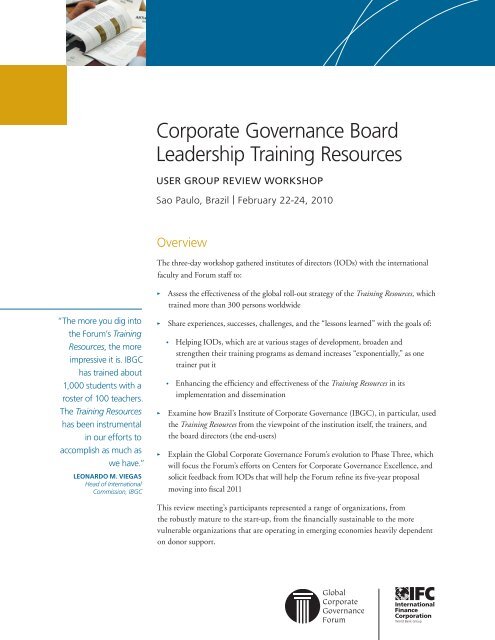
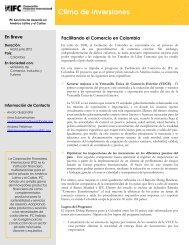
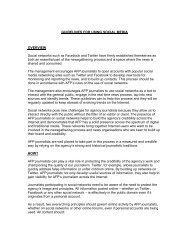
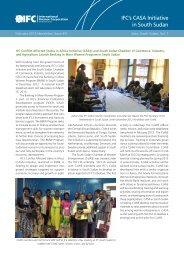

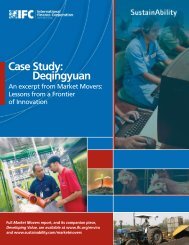

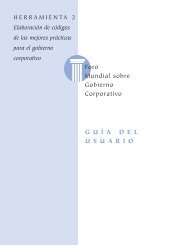
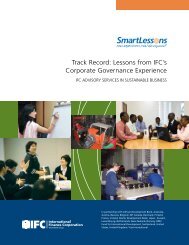
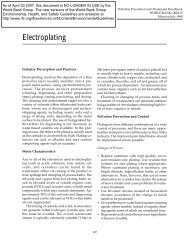
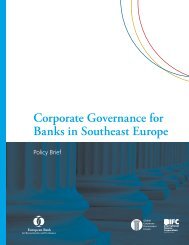
![Print a two-page fact sheet on this project [PDF] - IFC](https://img.yumpu.com/43449799/1/190x245/print-a-two-page-fact-sheet-on-this-project-pdf-ifc.jpg?quality=85)


